Hello, if you are just now joining the journey, please read the two previous blogs, glad you are here.
As we left the Red Fort I could not have imagined what Navine had in store for us. I thought we were just headed back to the street to meet our driver.

Navine said, “Follow me, stay close, and don’t talk to anyone!” I thought “Okay”! When have I ever aimlessly followed a guy anywhere?
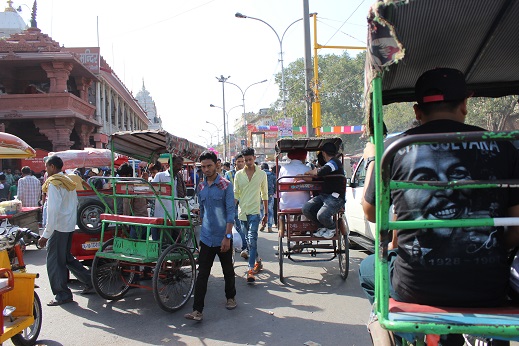
After risking our lives crossing one street, we headed down another. Just dodging the motorcycles and bike surreys was a skill I will need to work on!
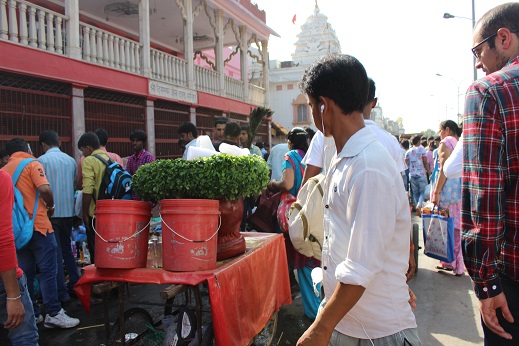
It looked as though we were headed for a market! Awesome, some shopping!
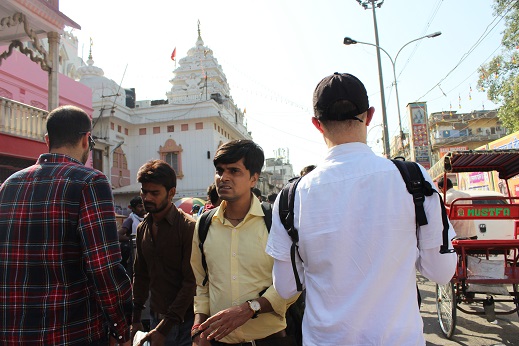
The crowds were thick and it was so hot!
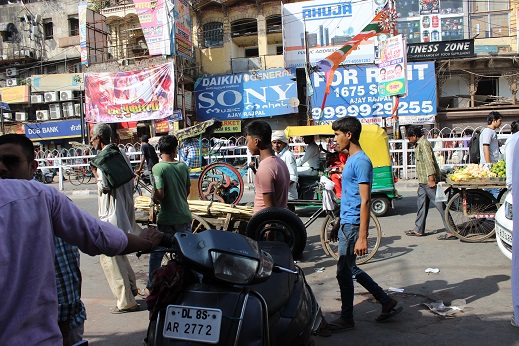
We passed by Best Buy…
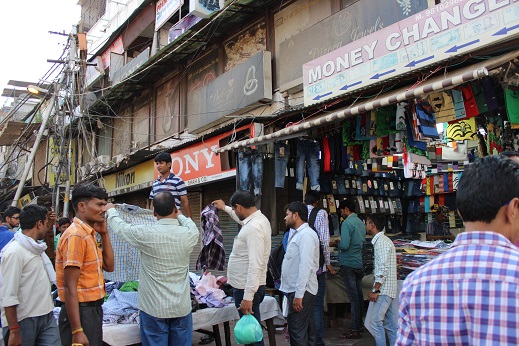
Walmart,
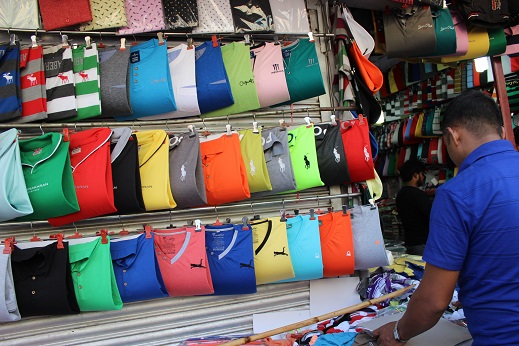
The Polo and Puma shop,
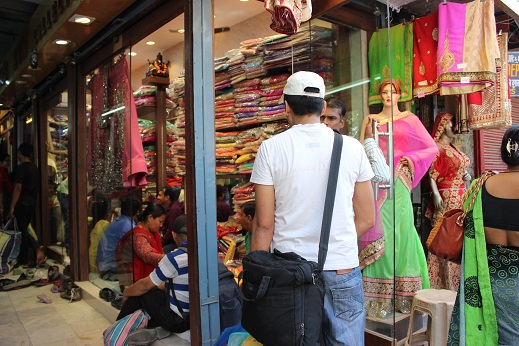
Dillard’s,
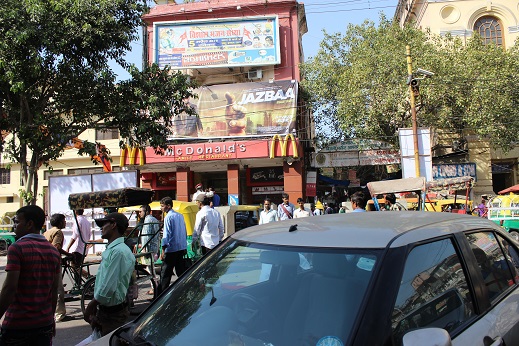
McDonalds. Hold it right here. How do they make Big Macs here? Navine told me only chicken sandwiches and fish fillets and French fries of course!

Continuing on, Neiman Marcus,
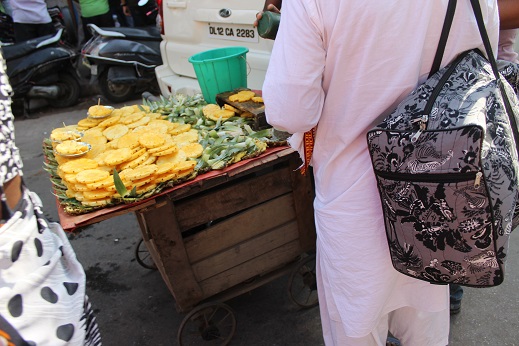
Sprouts,
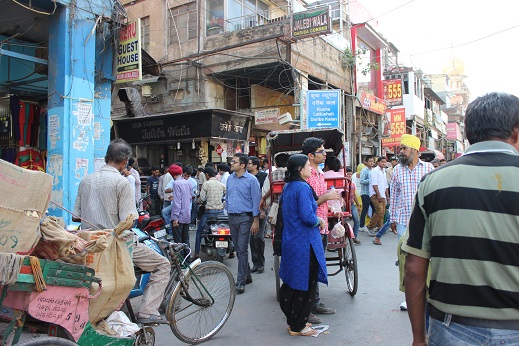
The corner of Parker and Preston!
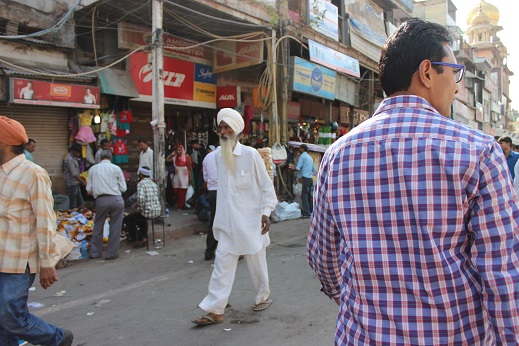
Then I started to get an idea on where we were and where we were going. The famous Chandni Chowk street shopping bazaar!

But since he wasn’t letting us shop, where was he taking us?

Then he finally said, “We are going to the Gurdvara Bangla Sahib Sikh shrine! What is this, I thought. This is what I found:
Guru Nanak Dev, the founder of Sikh faith, was born in the village of Talvandi, near the city of Lahore (now in Pakistan). One night he had a vision, in which God asked him to go out to the world and spread the word of love among humanity. He preached that God was in everyone irrespective to faith. God was present in all directions and was not restricted to temples, mosques and churches. Nanak stressed on kirat karo—meaning his followers should balance, work, worship and charity. They should protect all living creatures especially fellow human beings His teachings, were recorded in the holy book of the Sikhs called Guru Granth Sahib. After his death in 1539, his followers were called Sikhs, meaning disciples.
There were nine more Gurus following Nanak. The tenth Guru, Guru Govind Singh initiated the Sikh baptism ceremony in the year 1699. The first five baptized Sikhs were the Panj Pyare, the five loved ones. Before his death in 1708, Guru Govind Singh compiled the final version of Guru Granth Sahib. It contains the teachings of first five gurus and the ninth Guru Teg Bahadur, himself; he added just one couplet to the holy scripture. He also ordained that there would be no more Gurus after him and that the holy book would be the ultimate spiritual authority of the Sikhs. Guru Granth Sahib is the only scripture in the world that has been compiled by the founders of the faith during their lifetime. The fifth guru Guru Arjan Dev built the Golden Temple of Darbar Sahib in the city of Amritsar, which is the temporal head of the Sikh religion.
During the eighteenth century, the Mughal emperor Aurangzeb forcibly imposed Islam religion on the Hindu masses. Guru Teg Bahadur came to their help and revolted against the Mughal ruler’s atrocities. He was the youngest son of the sixth Guru, Guru Hargobind and went on to become the ninth Guru of the Sikhs. He was on his missionary tour of Bengal in east India when he heard that Aurangzeb had issued orders to forcibly convert Brahmins to Islam. Aurangzeb put five hundred Brahmins in jail hoping their plight would send a signal to the Hindu masses. The plight of the Brahmins moved the compassionate Guru who took on the might of the tyrant emperor. But Guru Teg Bahadur was arrested in Agra in 1675. From there he was brought to the Mughal court in Delhi. Aurangzeb tried to convince the Guru that the Hindu idolaters should be eliminated. The Guru too was against idol worship, but loathed the idea of forced conversions and told the Emperor that these were inhuman and barbaric and were against the teachings of his Gurus.
Aurangzeb was incensed by this rebuttal. He tortured the Sikh Guru’s followers and had the Guru himself beheaded in Chandni Chowk. Gurudwara Sis Ganj marks this spot. The tree under which the Muslims killed the Grus is still preserved inside this Sikh temple. Later, the body of the Guru was taken to the site where Guruwara Rakab Ganj is situated and cremated.
The Sikhs are easily distinguishable with their colorful turbans. The turbans are about six meters long and have to be tied each time they are worn. The Sikhs believe in the five Ks and always have on their body kesh (long hair which they never cut), kanga (comb) to keep their long hair combed, kachcha (undergarment) to be ready for any eventuality, kara (steel bracelet) symbolizing their unbreakable faith and kripan (knife) to fight against oppression.
Their temples are called Gurudwaras, doorway to the Guru. They worship no images, but have the holy book as their object of worship. They do not believe in the caste system, but offer community assistance in the form of kar seva. They run an open kitchen called langar where anyone without the distinction of caste or creed can have food. The Sikhs are only two per cent of India’s population. They are mainly concentrated in Punjab. Known for their agricultural skills, they have made their mark in all walks of life—from farming to fashion designing and from technocrats to truck drivers. They are widely accepted in India as a hardworking, happy-go-lucky people. (From the Book: The Holy Cow, by Tarun Chopra)
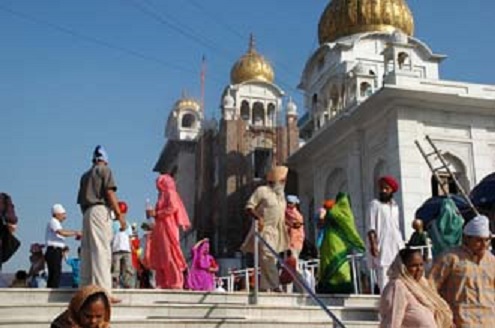
Gurudwara Bangla Sahib; is one of the most prominent Sikh gurdwara, or Sikh house of worship, in Delhi, India and known for its association with the eighth Sikh Guru, Guru Har Krishan, as well as the pool inside its complex, known as the “Sarovar.” It was first built as a small temple by Sikh General, Sardar Bhagel Singh in 1783, who supervised the construction of nine Sikh shrines in Delhi in the same year, during the reign of Mughal Emperor, Shah Alam II.
We walked into an office and were asked to leave our shoes and bags. That made me a little nervous leaving my bag but I was assured it would be safe! Then before entering the shrine, there was a pool of water to wash your feet. (I stepped over it hoping no one would notice).
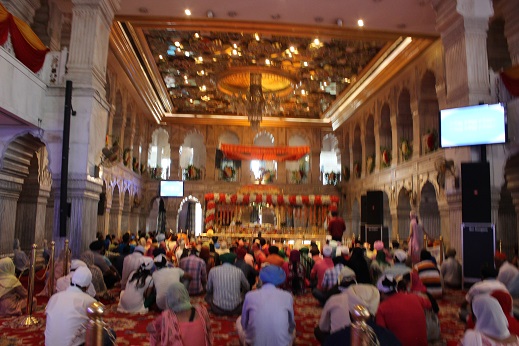
The grounds include the Gurudwara, a kitchen, a large (holy) pond, a school and an art gallery. We walked right into a service of chanting and ceremony. I felt weird taking pictures, but Navine said it was okay. You can see how I was sneakingly taking these…they don’t do justice. Oh and we had to wear little bandanas on our heads.
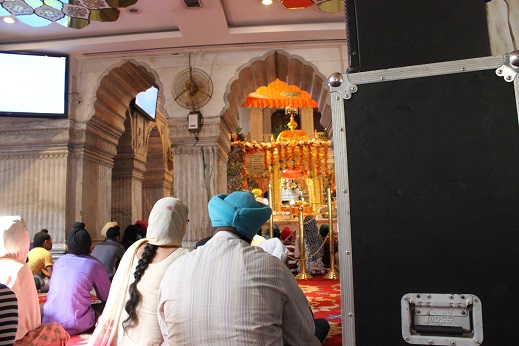
As with all Sikh Gurdwaras, the concept of langar (kitchen) is practiced, and all people, regardless of race or religion may eat in the Gurdwara kitchen (langar hall).
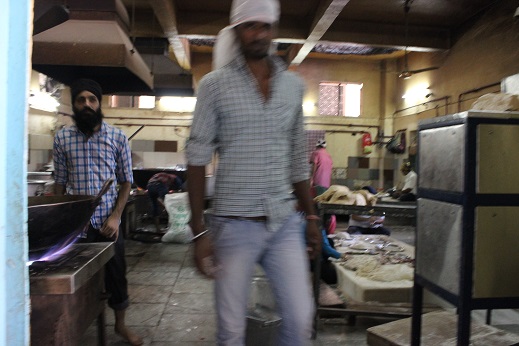
The Langar (food) is prepared by gursikhs who work there and also by volunteers who like to help out. They asked if we wanted to make some dosas but I thought because I had been sweating for now seemed like an entire day, I would pass on the offer. The kitchen was amazing though.
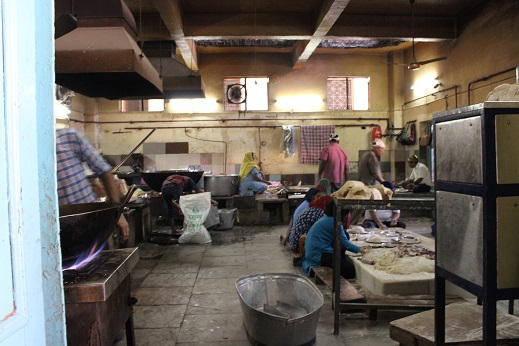
At the Gurdwara, visitors are requested to cover their hair and not to wear shoes. Assistance to foreigners and visitors with Guides, head scarves, and shoe-minding service can be found inside the compound and are available free of charge.
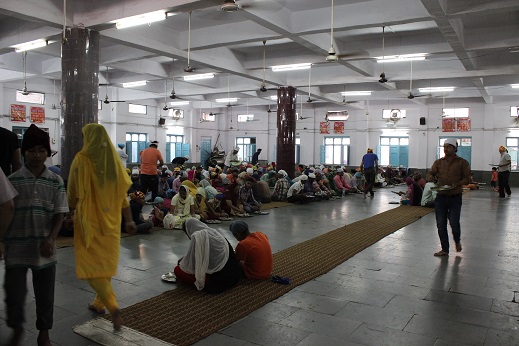
Here is the room where everyone was eating. It was so great to see “caring” in action. I felt a donation was probably better than me cooking!
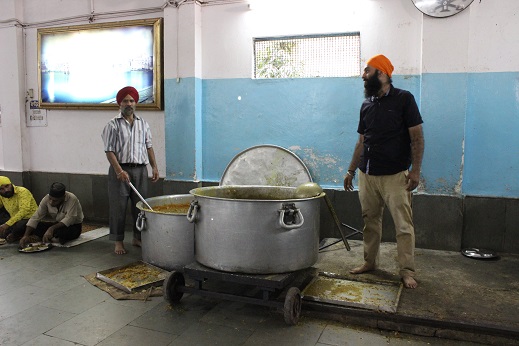
These were some big pots and a lot of food being prepared.
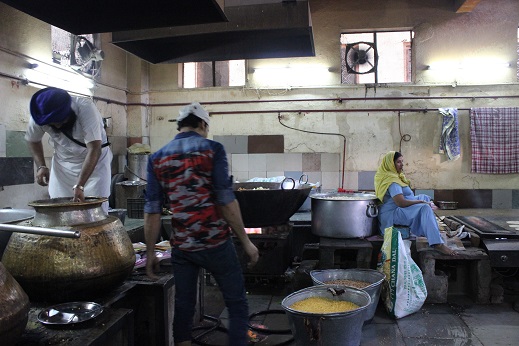
More big pots in the kitchen
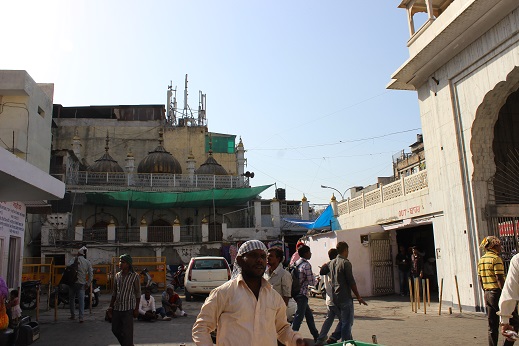
On our way out through the back door to get our shoes…
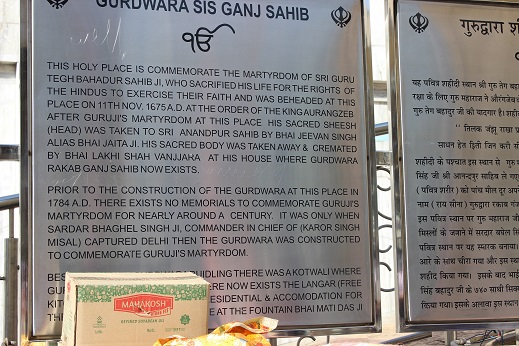
We passed this sign, I wish I would have moved that box! This is the story that was discribed in the book I quoted earlier.
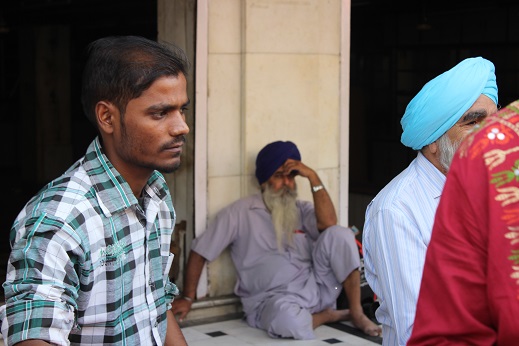
As we leave the shrine, I can’t help myself, I loved this guy…had to take his picture.
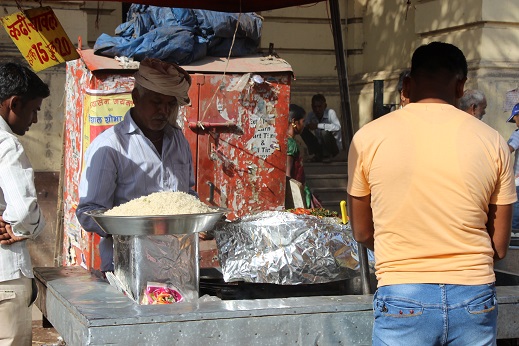
So back down the street we went..passing this giant rice cooker,

The family Jane followed across the street and Navine had a fit…thought he had lost her!
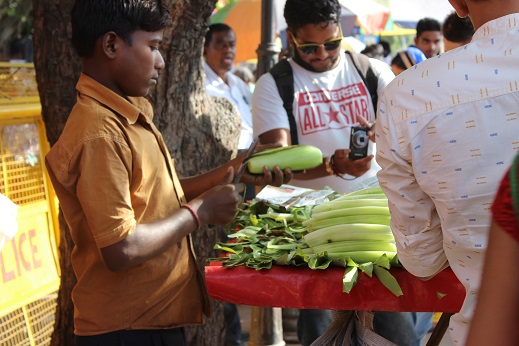
Again I can’t stress enough how hot it was! Here is a kid slicing cucumbers and having a big business! I really wanted one but did not dare!
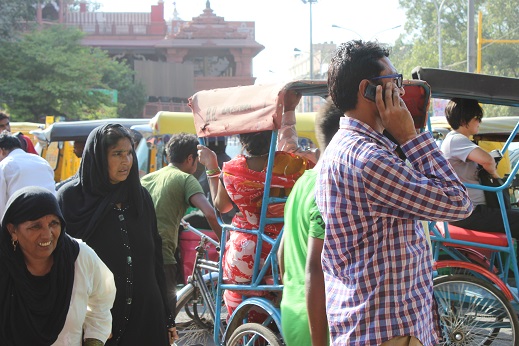
We waited by the side of the road while Navine called for our car.
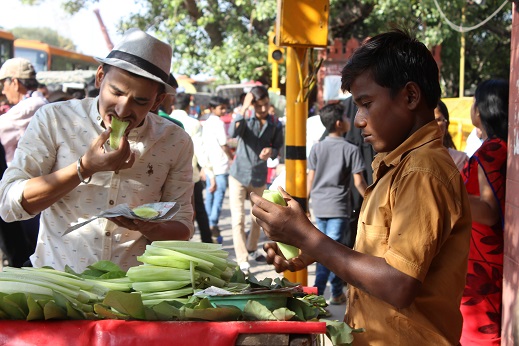
LOL, I really wanted those cucumbers! Maybe I thought if I just took enough pictures of them that they would cool me off!
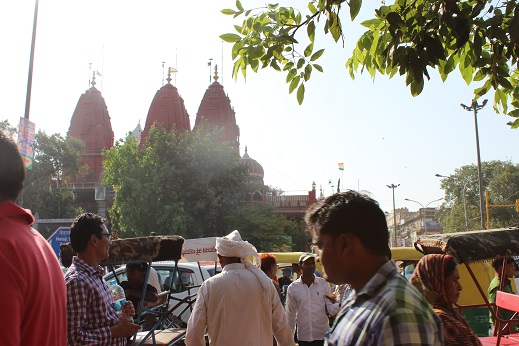
In the background we could see a Jain temples. We will visit some of these temples in Khajuraho.
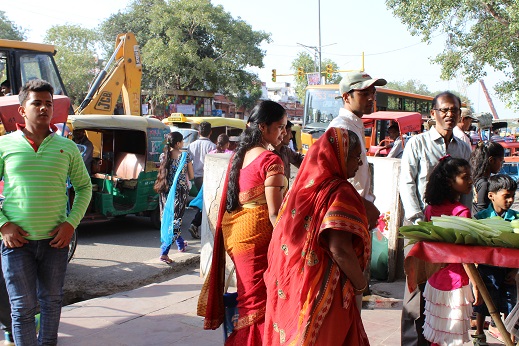
Finally our car comes and off we go for some lunch.
Thanks for reading, in the next blog we finish the day with lunch, a trip to Paris and the White House and Jane gets really brave, stay tuned. Peggy
